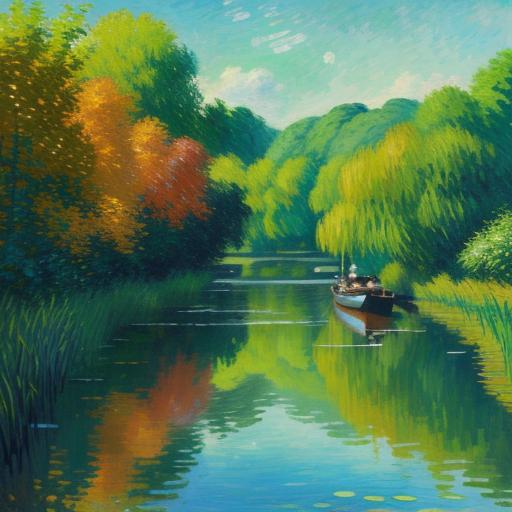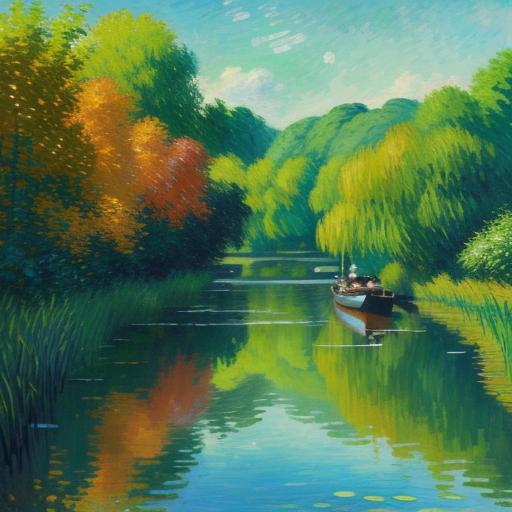Oil painting has been a beloved medium for artists for centuries, prized for its rich colors, versatility, and ability to create depth and texture. If you’re new to oil painting, these video guides will help you get started with the basics, from choosing materials to mastering essential techniques.
Choosing Your Materials
Before you begin your oil painting journey, it’s essential to gather the right materials. Here’s what you’ll need:
- Paints: Start with a basic set of oil paints. A beginner’s palette typically includes:
- Titanium White
- Cadmium Yellow
- Cadmium Red
- Ultramarine Blue
- Burnt Umber
- Burnt Sienna
- Brushes: Invest in a variety of brush sizes and shapes. Flat brushes, filbert brushes, and round brushes are versatile options for beginners.
- Canvas: Pre-primed canvases or canvas boards are excellent for beginners. They come ready to use and are available in various sizes.
- Palette: A wooden or glass palette works well for mixing colors.
- Solvents and Mediums: You’ll need odorless mineral spirits for cleaning brushes and thinning paint, as well as linseed oil or a painting medium to adjust the consistency of your paints.
- Easel: While not essential, an easel can make painting more comfortable and help you view your work at different angles.
For a visual guide on essential oil painting supplies, watch this helpful video:
Video: Oil Painting Supplies for Beginners
Setting Up Your Workspace
Create a well-ventilated area with good lighting for your painting sessions. Cover your work surface with a drop cloth or newspaper to protect it from paint spills. Arrange your materials within easy reach, and set up your easel at a comfortable height.

Understanding Oil Paint Properties
Oil paints have unique properties that set them apart from other mediums:
- Slow drying time: This allows for blending and reworking over extended periods.
- Rich, vibrant colors: Oil paints maintain their intensity when dry.
- Opacity and transparency: Oils can be applied in both opaque and transparent layers.
- Texture: The paint can be applied thickly for impasto effects or thinly for smooth finishes.
Basic Oil Painting Techniques
Mastering these fundamental techniques will help you create a solid foundation for your oil painting practice:
1. Underpainting
An underpainting is a monochromatic layer that serves as a base for your painting. It helps establish values and composition early in the process.
To create an underpainting:
- Thin your paint with solvent.
- Apply a wash of color (often burnt umber or another earth tone) to your canvas.
- Use a cloth to wipe away highlights and define basic shapes.
This video demonstrates the underpainting technique:
Video: Underpainting makes Oil Painting SO much EASIER!
2. Blending
Blending is crucial for creating smooth transitions between colors and values. There are several blending techniques:
- Wet-on-wet: Blend colors directly on the canvas while they’re still wet.
- Softening edges: Use a clean, dry brush to soften the transition between two areas of color.
- Glazing: Apply thin, transparent layers of color over dry paint to create depth and luminosity.
3. Impasto
Impasto involves applying thick layers of paint to create texture and dimension. This technique can add visual interest and emphasize certain areas of your painting.
To practice impasto:
- Load your brush or palette knife with a generous amount of paint.
- Apply the paint to your canvas in bold, textured strokes.
- Experiment with different tools and stroke directions to create various effects.
4. Scumbling
Scumbling is a dry-brush technique where you apply a thin layer of opaque paint over a dry underlayer, allowing some of the underlying color to show through.
To scumble:
- Use a relatively dry brush with little paint.
- Lightly drag the brush over the surface, creating a broken color effect.
- Build up layers gradually to achieve the desired result.
For a demonstration of these techniques, watch this video:
Video: Top 5 Oil PAINTING Techniques Every Beginner Should Know
Color Mixing and Theory
Understanding color theory is crucial for creating harmonious paintings. The color wheel is an essential tool for artists, showing the relationships between primary, secondary, and tertiary colors.
Key concepts to remember:
- Primary colors: Red, blue, and yellow
- Secondary colors: Green, orange, and purple (created by mixing two primary colors)
- Complementary colors: Colors opposite each other on the color wheel (e.g., red and green)
- Warm and cool colors: Warm colors (reds, oranges, yellows) advance, while cool colors (blues, greens, purples) recede
Practice mixing colors on your palette before applying them to your canvas. Start with simple exercises, like creating a color wheel or mixing various shades and tints of a single color.
This video offers an in-depth look at color mixing for oil painting:
Video: How to Mix ANY Color – No Talent Method
Composition and Subject Matter
As a beginner, it’s best to start with simple subjects and gradually increase complexity as you gain confidence. Here are some ideas for your first paintings:
- Still life arrangements
- Landscapes
- Simple portraits
- Abstract compositions
Consider the rule of thirds, balance, and focal points when composing your painting. These principles will help create visually appealing and engaging artworks.
Cleaning Up and Caring for Your Materials
Proper cleanup and maintenance of your materials are essential for longevity and safety:
- Clean brushes thoroughly with soap and water after using solvent.
- Store oil paints in a cool, dry place.
- Dispose of solvents and oily rags properly to prevent fire hazards.
- Allow your palette to dry before scraping off excess paint.
Common Mistakes to Avoid
As you begin your oil painting journey, be aware of these common pitfalls:
- Using too much solvent can make your paint too thin and weak.
- Overworking your painting, leading to muddy colors.
- Ignoring the fat-over-lean rule (applying leaner layers over fatter ones can cause cracking).
- Rushing the drying process or not allowing enough drying time between layers.
Developing Your Skills
Improvement comes with practice and experimentation. Here are some tips to help you grow as an oil painter:
- Paint regularly, even if it’s just for short periods.
- Study the works of artists you admire and try to understand their techniques.
- Take classes or workshops to learn from experienced painters.
- Join a local art group or online community for support and feedback.
- Experiment with different styles and subjects to find your unique voice.
Remember, every artist’s journey is unique, and progress takes time. Be patient with yourself and enjoy the process of learning and creating.
This comprehensive video tutorial covers many aspects of oil painting for beginners:
Video: 5 Essential Oil Painting Tips For Beginners
As you embark on your oil painting adventure, remember that practice and persistence are key. Don’t be discouraged by initial challenges – every great artist started as a beginner. Embrace the learning process, experiment with different techniques, and most importantly, enjoy the creative journey. With time and dedication, you’ll develop your skills and find your unique artistic voice in the rich and rewarding world of oil painting.



